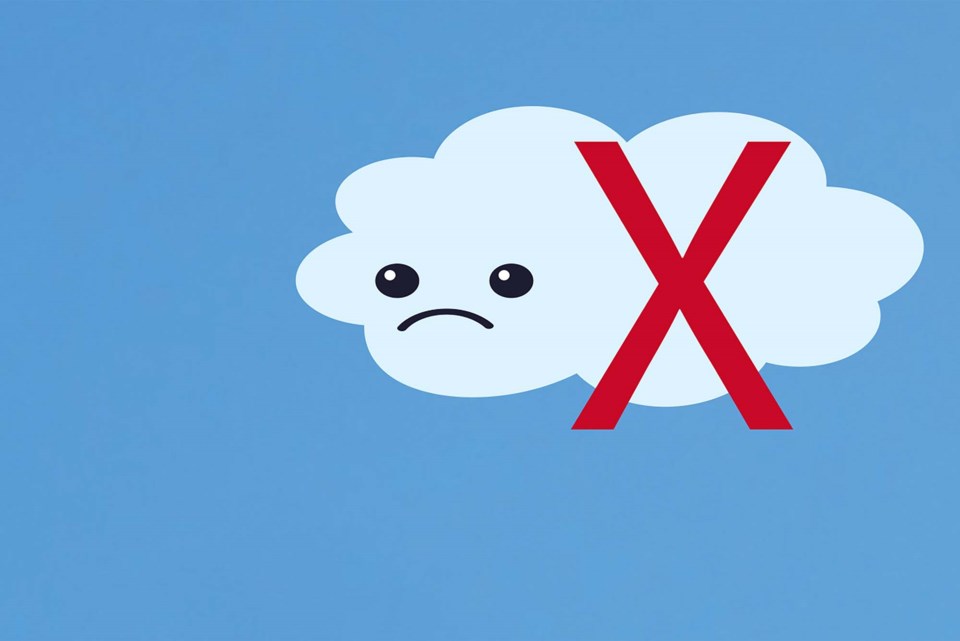Scientific St. Albert
The Gazette is using science to answer questions from students of all ages about the world around them. Send in your questions to [email protected].
Clouds fire the imagination. Who among us hasn’t watched these castles in the sky scudding by, pursued by cloud bunnies and wispy, winding sky-wyrms?
Pearl, a Grade 2 student at Wild Rose Elementary, may have been inspired by such sights when she asked Scientific St. Albert, “What would happen if there were no clouds?”
The answer involves freezing, boiling, and the probable extinction of all life on Earth, scientists suggest, depending on how you get rid of the clouds.
No clouds = no life
We need three ingredients to create clouds, reports the National Oceanic and Atmospheric Administration: water vapour, temperature, and cloud condensation nuclei, which are particles (dust, pollen, salt, etc.) with a radius of at least one micrometre. If the air is cool enough to get the relative humidity to at least 100 per cent, water vapour condenses onto these nuclei to form cloud droplets. This cooling typically happens as air gets lifted up into the sky by convection or running into tall or dense objects, such as mountains or cold air masses, but can also happen near the ground under cold conditions, producing a ground-based cloud called fog.
If we want blue skies forever, we’ll have to address at least one of these three cloud ingredients.
We could try getting rid of Earth’s water — say, with a really big sponge that we then toss into the sun or something. This would mean no clouds, true, but also no life, as life as we know it needs water.
We could also get rid of those condensation nuclei with some sort of moon-sized HEPA air filter. This seems implausible, even by Scientific St. Albert’s standards, as we’d have to intercept every bit of dust forever.
It also wouldn’t work, reports Alister Ling, a retired Environment Canada meteorologist in Edmonton. Researchers have found that you still get clouds forming even with ultra-clean air once the humidity hits about 400 per cent, as at that point the vapour condenses back into liquid.
That leaves temperature. Option one is to crank the thermostat to the everything-is-lava temperatures we had during the Earth’s formation, said Andrew Weaver, a professor of earth and ocean sciences at the University of Victoria. No amount of heat-trapping pollution could do this; we’d have to shove Earth much closer to the sun — maybe around Mercury — to get the necessary heat. This would evaporate all water on Earth and keep it as vapour, which would prevent the formation of clouds, oceans, and life.
Super-cooling the Earth by pushing it out to, say, Neptune, might also work, Ling said. In this case, water vapour would sublimate out of the air as diamond-dust-like ice instead of forming clouds. That ice would make the Earth more reflective and colder, resulting in more ice.
“Earth would be an ice planet,” Ling said, but it might be habitable, as people can survive in the Arctic.
The inverse of Pearl’s question — clouds forever, everywhere — would be more livable.
“You basically turn into Victoria (Island) in winter,” Weaver joked.
Weaver and Ling said permanent clouds would likely result in more rain and flooding, and might harm sun-loving crops. They might result in more cases of seasonal affective disorder, and would likely result in hotter temperatures, as low-lying clouds trap heat.
“You end up in a steam-bath situation,” Ling said, with lots of fog everywhere.
Other effects
Wiping out clouds would result in hotter days and colder nights, as clouds block incoming heat in the day and trap it like a blanket at night, Weaver said. The tropics would get hotter and the poles drier without clouds to carry heat and moisture from the former to the latter. This temperature difference could cause stronger winds, but might not result in bigger storms, as storms use the heat cycling caused by water evaporating and condensing as clouds to get bigger. We’d also have worse air quality, as we wouldn’t have rain or snow to wash pollutants out of the air.
We’d probably get more solar power. Asked for a rough guesstimate, Gordon Howell, an Edmonton engineer who has built many solar power systems, said Albertans would probably get about 30 per cent more energy out of their solar PV systems if they had clear skies year-round, based on historic records.
Clouds are an integral part of Earth’s climate, blocking and trapping heat from the sun and moving heat and water from place to place, Weaver said.
“If there were no clouds, then there would be no (liquid) water, no rain, and no life.”
And there would be no puffy sky rabbits. And that’s no fun at all.




